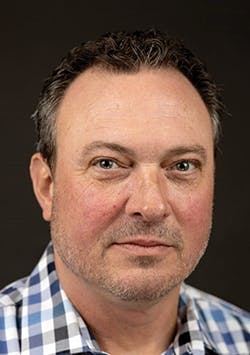How digitally mature is your plant?
One of the hottest topics on the minds of MRO professionals this past year has been how to add remote asset condition monitoring into their mix of daily maintenance work. Tim White, CMRP, is a Senior Manager at T.A. Cook focused on providing services related to Digital Asset Performance Management. Previously he worked in the industry as a Global Director for Asset Management, responsible for 83 sites across the globe. Plant Services Chief Editor Thomas Wilk had the opportunity to ask White for his thoughts on the renewed industry focus on condition monitoring and digitalization.
PS: What trends are you seeing in industrial digitalization, and would you say these are the same for small to medium facilities as for larger facilities?
TW: This year I’ve been running into companies that either (a) made the leap a few years ago and heavily invested. And when I say heavily invested, I mean, like, nine-digit type investments. They went full bore. And (b) the other folks were the guys on the fence and they were like, “Well, I’m going to sit back to see how this goes and let everybody else work out the problems.” Which arguably was a good and bad decision, bad from the case that they’re going to be playing catch-up and trying to get to a level where their competitors are. Their competitors who made the leap, even though they might’ve had some difficulties that they had to work through, they probably learned a lot more and understand what they’re doing a lot better.
I see a lot of push for the condition monitoring space; I’m going to speak specifically to asset management. We have a lot of people wanting to get on board with that, and the driver seems to always be, “How can I reduce the personnel that I have now? How can I start automating some of this?” They have a lot of manual processes, a lot of things that they’re doing that require human labor, and they need to cut back on cost. They see digitalization efforts as a way to reduce staffing requirements. It’s not necessarily that they’re going to just cut all their staff, but it gives them a vehicle mostly through the attrition process where they can slowly let positions go away as they mature with their digitalization.
This article is part of our monthly Big Picture Interview column. Read more interviews from our monthly Big Picture series.
The other thing is, many folks have started messing with data a lot, and maybe they got themselves to a point where they’re collecting a whole bunch of information: “Well, okay. I’ve got all this data coming in but I have no idea what to do with it.” So, they took step one and never continued on and they’re trying to figure out, “Where’s all this value that everybody keeps telling me I’m going to get? I don’t know what to do.”
But the other piece is maybe they’ve kind of made a first step, and from a manual or batch-type process they’re calling back data or downloading segments of data into some kind of spreadsheet format, and they’re paying people to sit there and try to go through and analyze this and try to find information, which is not that efficient. So, they’re looking to say, “How can I automate this more? How can I find information easier?”
PS: What benefits do plants experience when they undergo a digital maturity assessment?
Why industrial plant teams need to embrace their creativity to achieve greater success
Why you should automate overall equipment effectiveness data collection
TW: T.A. Cook delivers digital maturity assessments as well as an offering, so when I lead those efforts, usually customers are looking to make a step forward from, “Okay, I don’t understand where I’m at and what I need to do to progress further or develop further within this maturity.”
One of the things that we do is we will rank clients on a 1-6 scale, but it’s not against their peers. It’s really against what that development path should look like from the first steps of what we call “computerization.” This is where we gather information and have it all together but many times still in isolation. Maybe they have several different applications but they’re still very siloed or isolated. This scale goes all the way through our 6th ranking which we call adaptability, where now we’re making autonomous decisions and taking actions at some level automatically. We rate them against that development path, and they get to see how far they’ve come on their journey.
When we do those assessments it also gives us a chance to really dive into the systems that they have. We not only look at their information systems and the data quality, but also what they have for resources; and what I mean by resources is sensor technology, the competencies, the ability to process data, etc. This also includes their organizational structure: How’s their culture, and is their culture ready to accept this change or this initiative?
This story originally appeared in the August 2021 issue of Plant Services. Subscribe to Plant Services here.

